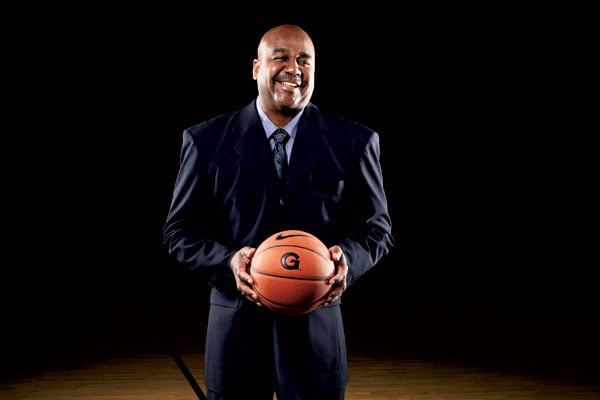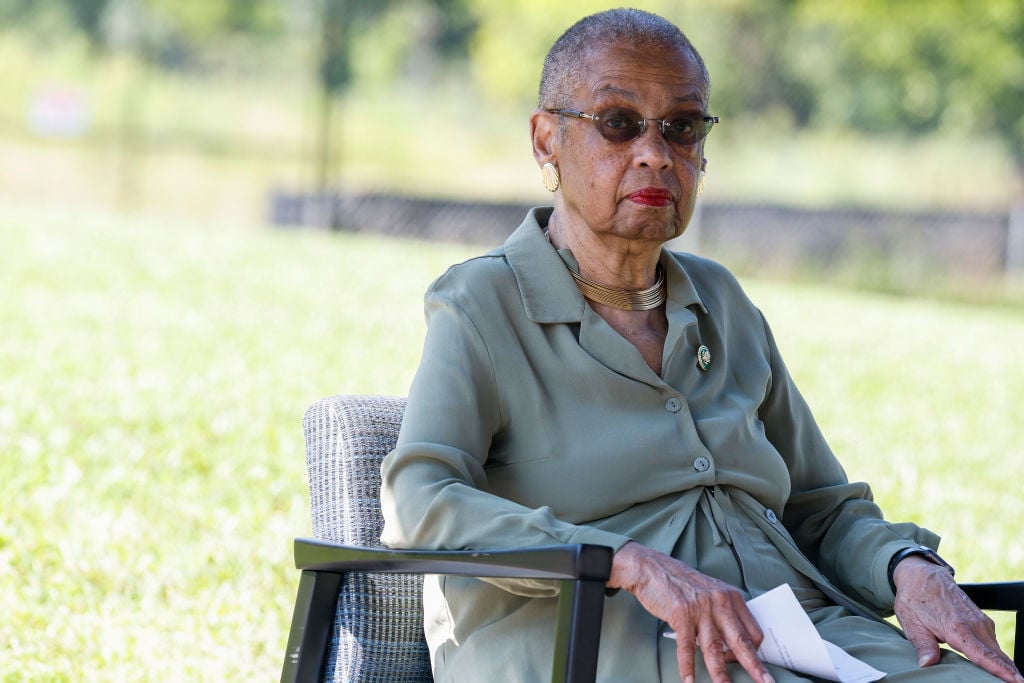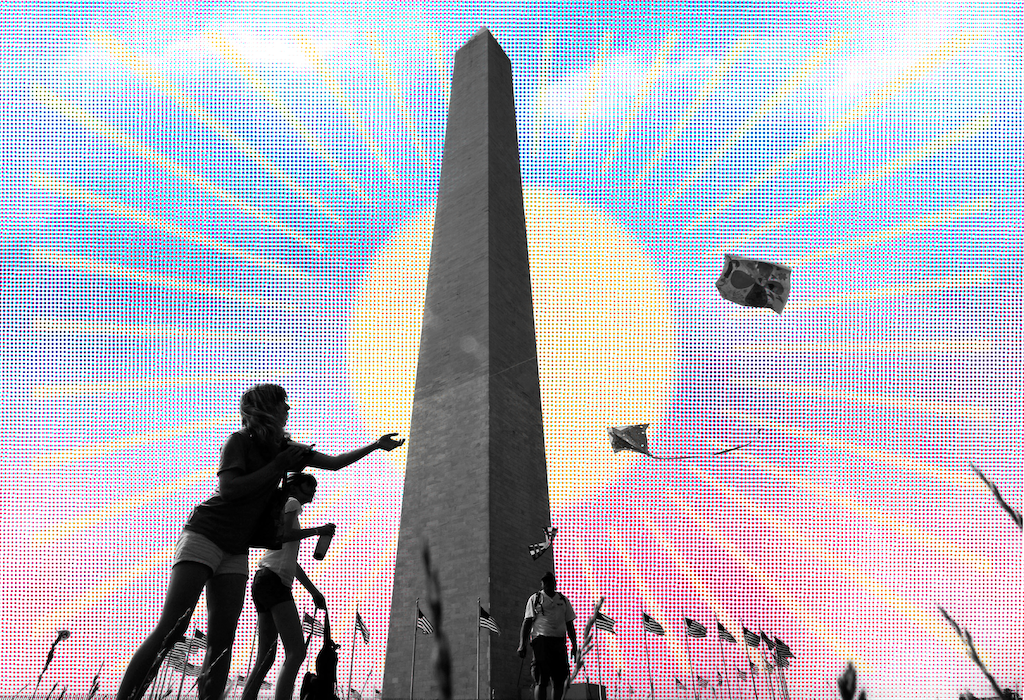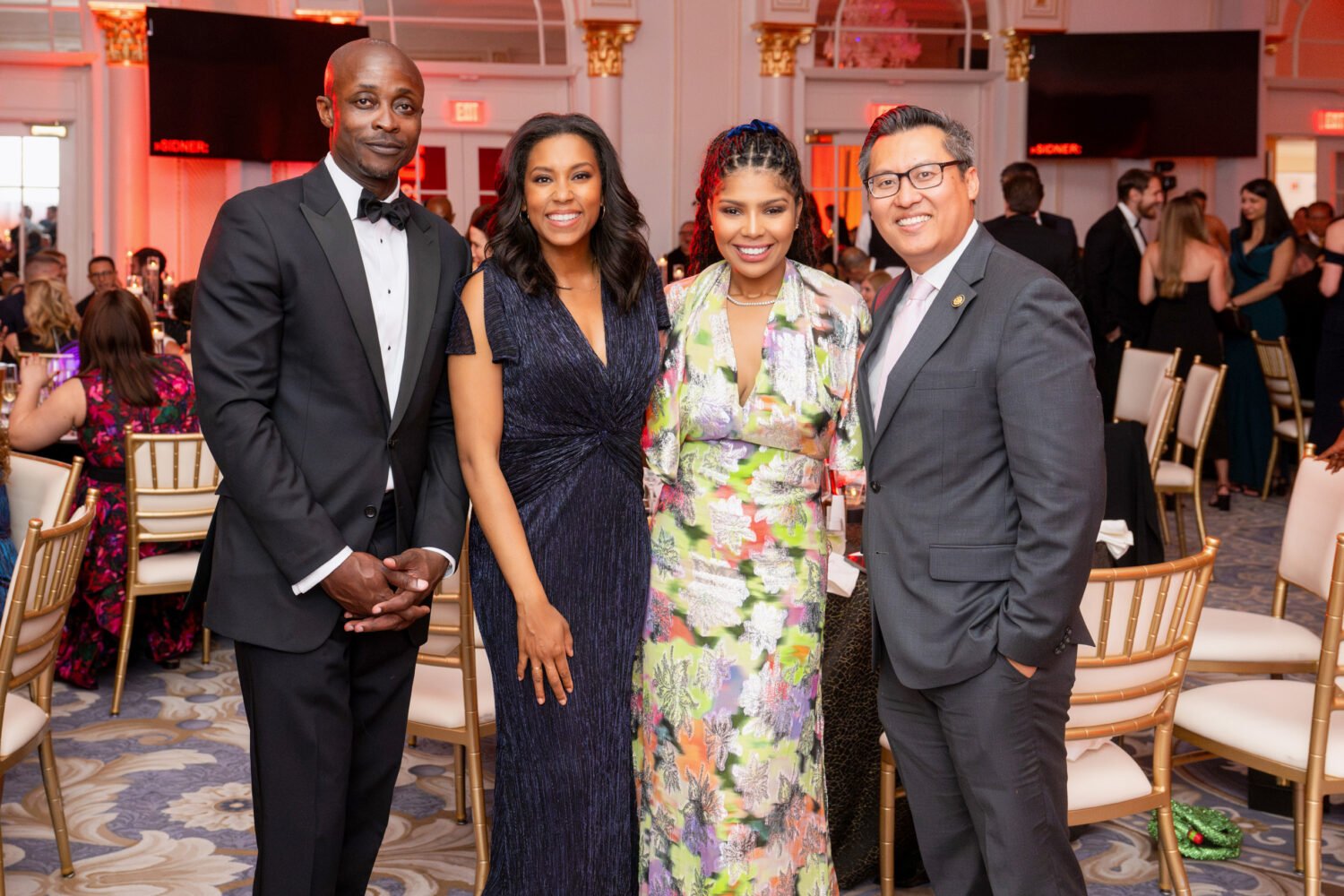Back at the hotel, he formulated a plan. Thompson helped broker a meeting among himself, two of his players, and members of the Bayi team. It took place the next day at the Beijing airport. The rest of the team had already left for Shanghai, but Thompson and Hoya players Hollis Thompson (no relation) and Clark stayed behind for the meeting. The two sides exchanged gifts, posed for photos, and expressed their regret.
The summit got lots of coverage in the Chinese media, with Chinese assistant foreign minister Cui Tiankai telling reporters afterward, “My understanding is that it’s all cleared up. We’re pleased about this outcome.”
Georgetown’s board of directors later met to review the incident. Their conclusion: Thompson’s finesse transformed a negative into a positive.
“That was true grace under pressure, and it ended up reflecting well on the university and John,” says Wizards and Capitals owner Ted Leonsis, a member of Georgetown’s board. “If John’s father was the coach, he would have been imprisoned.”
|
FATHER |
SON |
|
AGE |
AGE |
|
HEIGHT |
HEIGHT |
|
HIGH SCHOOL |
HIGH SCHOOL |
|
COLLEGE |
COLLEGE |
|
GEORGETOWN COACHING RECORD |
GEORGETOWN COACHING RECORD |
|
BEST NCAA |
BEST NCAA |
|
ON-COURT PERSONA |
ON-COURT PERSONA |
|
NICKNAMES |
NICKNAME |
|
COLLEAGUE’S |
COLLEAGUE’S |
Thompson says the events in China may have played a role in the surprising early-season success the team experienced this year. “Being involved in that confrontation accelerated their understanding of their need to be there for each other,” he says.
How surprising have they been? The Hoyas were picked to finish tenth out of the 16 teams in this year’s Big East preseason coaches’ poll. Most observers expected 2011-12 to be a transitional season, considering that the team had lost its two leading scorers–Austin Freeman and Chris Wright–to graduation.
This season’s roster includes six freshmen and just two seniors, yet as of February 9 the Hoyas were ranked 12th in the nation with a record of 18-5, including wins over four top-20 opponents. The team was ranked as high as number nine in January.
Another run of success this March would undoubtedly improve the chances for one thing Thompson has coveted since the day he arrived at Georgetown: a new home for the program.
He doesn’t mince words when describing what he believes are Georgetown’s substandard basketball facilities: “I think if you do the research, you’ll find that we are among the bottom two in the Big East.” (Thompson wouldn’t say whose facilities he considered worse, but it’s widely believed among reporters who cover basketball that the honor belongs to Seton Hall.)
McDonough Arena is quaint, but it can’t compare with the modern facilities enjoyed by other programs of Georgetown’s stature. It puts Thompson at a competitive disadvantage when it comes to recruiting. Elite high-school students want to play where the toys are new and shiny, the locker rooms are plush, and the amenities conjure a spa. Georgetown, despite its standing as one of the nation’s elite programs, has none of that.
Thompson is particularly galled by the fact that his team–which generates the revenue that supports all 29 of Georgetown’s other sports programs–has to share its practice court and coordinate scheduling with the Hoyas’ volleyball and women’s basketball teams.
According to one member of the Georgetown staff, the coach has offered to use his own money to rent space for the volleyball teams in Yates Field House, a student fitness center.
To Thompson’s complaints, DeGioia says, “He’s absolutely right. Our current facilities are not competitive with the current environment of Division I men’s and women’s basketball. It’s our next building.” The university has building plans and a zoning-commission hearing scheduled for this spring, but DeGioia can’t say exactly when the facility will be finished.
Infrastructure is not the only area in which Georgetown is leaking prestige. Its conference–the Big East–is losing members faster than MySpace. Syracuse and Pittsburgh are leaving for the ACC, while West Virginia is departing for the Big 12. Houston, Southern Methodist, and Central Florida will take their places, but those programs lack the stature of the ones that are departing. The defections may cost the Big East its reputation as the nation’s toughest conference and will almost certainly make recruiting harder for the schools that remain, including Georgetown.
The impending Big East shuffle also jeopardizes the Hoyas’ greatest rivalry. Georgetown and Syracuse have been enemies since the 1980s, when the elder Thompson and Jim Boeheim battled most years for the number-one spot in the conference, if not the nation. With Syracuse leaving, the annual meetings between the schools may no longer be part of the schedule.
Fans of both teams want the rivalry to continue. Boeheim, now in his fourth decade as head coach at Syracuse, says it “absolutely” will. Thompson, citing the questionable wisdom of playing an elite out-of-conference school on an annual basis, is less certain.
There’s not as much speculation about where Thompson might go next as there would be if he had a different last name. But the assumption that his attachment to Georgetown will keep him on the hilltop for as long as his father stayed is anything but guaranteed.
“We’re all hoping that the Georgetown platform can be sticky for John,” says Leonsis. The Wizards owner concedes that Thompson would be a strong candidate not only for other high-profile college jobs but also for head coaching positions in the NBA.
“That might be a good challenge,” Leonsis adds, “but there’s something romantic with a higher calling in coaching a university, and he would lose that should he go to the NBA one day.”
DeGioia’s desire for Thompson to stay is somewhat less poetic: “I’d say John came here with a goal in mind–to win a national championship–and I don’t think he’ll be satisfied until he wins one.”
If Thompson were to leave Georgetown, it likely wouldn’t be over his compensation. The university’s tax filings for fiscal year 2010 (the most recent data publicly available) list the coach’s salary as $1.8 million. That makes him by far the school’s highest-paid employee, and in 2011 it made him the 12th-highest-paid college basketball coach, according to USA Today.
When Thompson is asked if he intends to stay indefinitely, he answers: “When my wife was diagnosed with breast cancer, you quickly learn that your world can change in an instant, and at that point I learned you shouldn’t make statements about indefinite.”
Meanwhile, amid the pressure to win, Thompson’s cool demeanor prevails. And the teaching continues.
In a December game at the Verizon Center against crosstown opponent Howard University, the Hoyas–who had led at one point by 17 points–saw their lead dwindle to two with less than eight minutes remaining in the second half. It was a juncture at which the unwritten coaching handbook calls for a time-out–to stop the bleeding, to issue instructions, and to reverse the momentum. Thompson stood calmly and let the game continue.
“At some point, the guys on the floor have to take ownership of what’s going on,” he says. “I wanted them to figure it out on their own. Not just to figure it out but to fix it.”
Georgetown won the game by 14.
If you liked this story, you may be interested in How the Verizon Center turns the Hoyas basketball court into the Capitals hockey rink in less than three hours.
This article appears in the March 2012 issue of The Washingtonian.

















